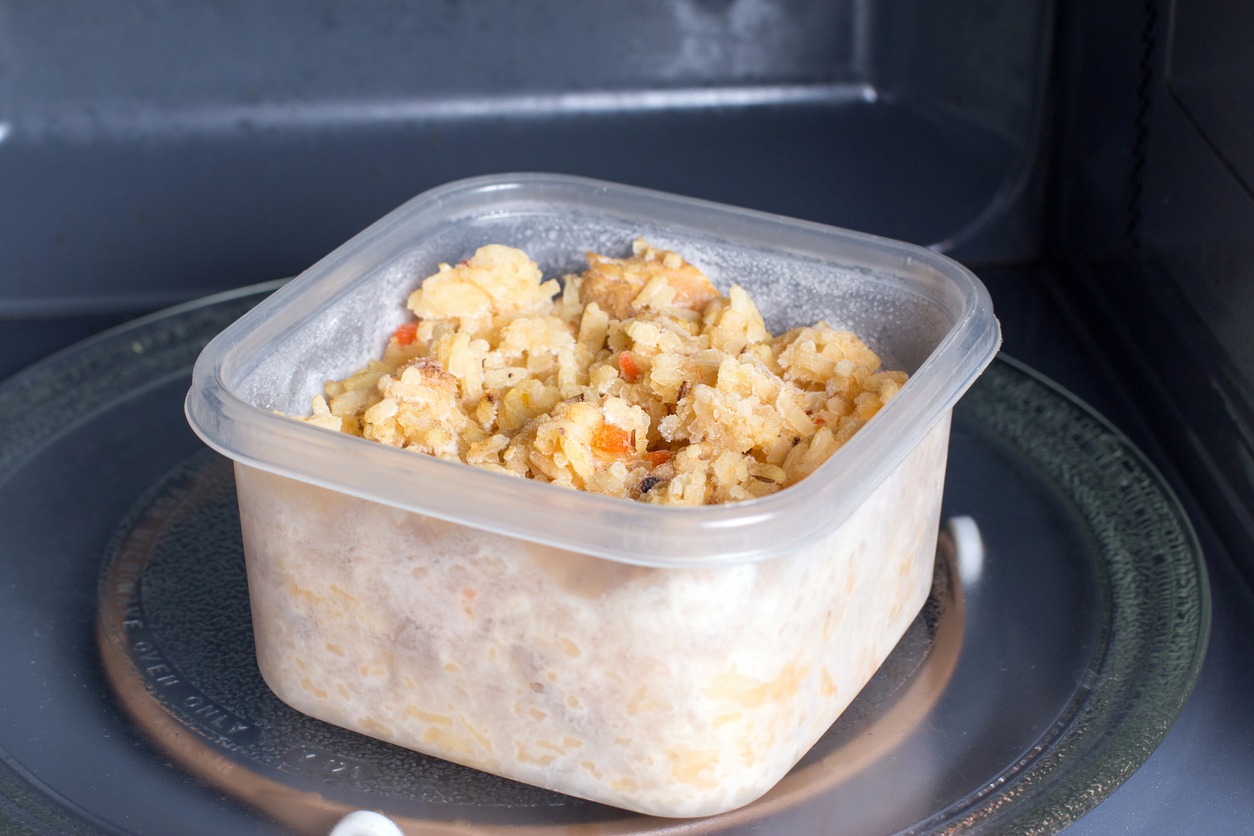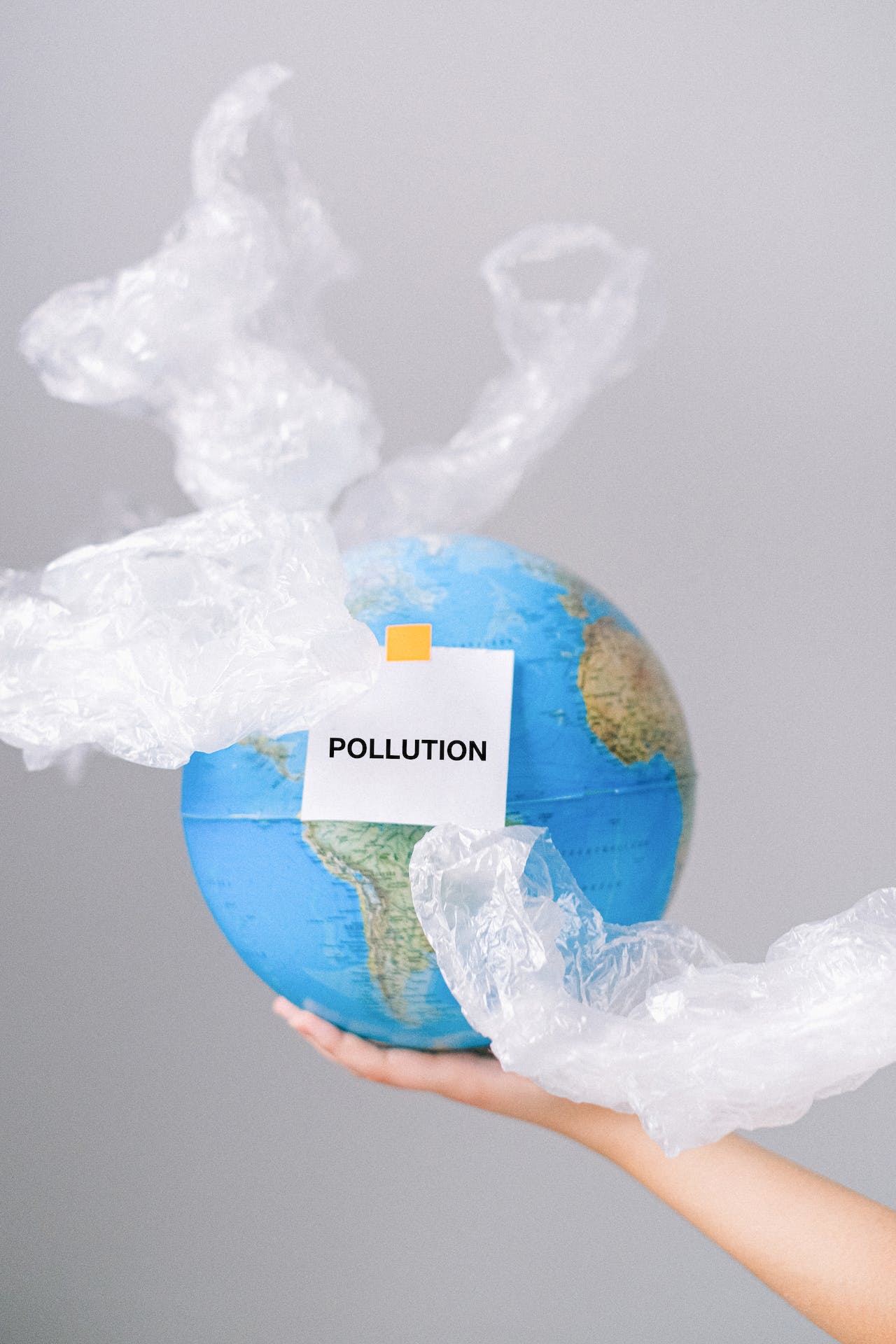Plastic can be found just about anywhere in the kitchen, from the seats of chairs and stools to the countertops (acrylic composites) to the PTFE linings of nonstick cooking pans to the pipes that carry water around the house. At this moment, open your refrigerator. The food may be encased in PVC cling film, yogurt may be stored in plastic tubs, cheese may be enveloped in plastic wrap, and water and milk may be contained in blow-molded plastic containers.
In contrast to prevailing opinion, the label affixed to plastic containers indicating “microwave safe” does not confer an exemption from legal consequences. Although there exists a hierarchy delineating the relative hazards that plastics pose to human health, this particular label remains unrelated to our well-being. The term “microwave-safe” does not denote the absence of chemical leaching from the container into the food during microwaving; rather, it indicates that the plastic material can endure the melting point of a microwave oven.
Continue reading to discover the significance of the “microwave safe” label on plastic and how it affects consumer safety.
What Does “Microwave-Safe” Mean?
You may be curious as to whether or not your dishes are microwave-safe. Unfortunately, the absence of a microwave-safe symbol or obvious indication on the underside of the dish would make it difficult to determine.
Even without food or water, an item is considered microwave-safe if it does not undergo immediate heating when nuked. In order for a microwave to function, water molecules are heated and frictional heat is generated.
When food is heated indirectly in a microwave-safe container, it does not melt; this is crucial because adding compounds to food while it is being heated would be possible. Other than for refining purposes, no metal should be contained in a vessel.
When considering microwaveable dinnerware, the majority of individuals instinctively opt for glass or ceramic tableware. The handling of plastic, conversely, requires extreme prudence. Plastic is significantly more practical and safe than ceramic and glass, notwithstanding the misconceptions and concerns associated with the latter two materials.
Regarding the plastics identification codes, microwaveable packaging is categorized as high-density polyethylene (#2) and polypropylene (#5). Number seven (#7), which is a mixture of other plastics, must be avoided at all costs because it contains substances that could be released, including Bisphenol-A.
Types of Plastics Used in Microwave Products
While all plastics permit the transmission of microwaves, not all plastics perform optimally when exposed to the heat. The manufacturer of the specific container in question is essentially in charge of approving it for microwave use, as additional factors must be taken into account, including the container’s wall thickness and strength, as well as the plastic’s maximal temperature resistance. The contents of containers may surpass the temperature resistance of the plastic containers themselves, which could result in container degradation and possible harm to individuals.
The prevailing material for microwavable plastic food containers is polypropylene. Although polypropylene is generally considered microwavable, you should consult the manufacturer prior to placing it in the microwave. LDPE is also considered microwavable; however, its insensitivity to high temperatures restricts its use to lid materials only.
You should avoid HDPE unless specifically approved by the manufacturer, as many of our manufacturers do not recommend it for use in the microwave. Because PET and polycarbonate have a tendency to absorb heat, they are unsuitable for microwaving. Additionally, polystyrene and acrylic are not advised.
Microwave transparency is highest among polymethylpentene and polysulfone, which are frequently used plastics for laboratory equipment. When heated aggressive compounds such as solvents or acids are present, fluoropolymers may be utilized; however, adequate ventilation is critical. Closure threads must be entirely disengaged prior to microwave heating of bottles or containers.
Safety Standards and Regulations
Standards for the safe production and storage of food, beverages, and pharmaceuticals were established by the Food and Drug Administration (FDA). In addition to establishing rigorous standards for consumable products, they conduct thorough examinations of packaging materials and preparation equipment, including plastic. Considering the prevalence of plastic packaging in our snacks, soft beverages, and medications, one might assume that the list of food-contact plastics approved by the FDA is quite extensive. In actuality, the plastics utilized to package our favorite foods are limited to a handful of major varieties.
“FDA compliant” denotes that a substance satisfies every FDA regulation pertaining to direct, secure contact with food. It is essentially an official designation that a substance is “food grade.” An FDA-compliant material must possess the capacity to endure the environment in which it will be utilized. A plastic conveyor belt that is utilized to transport food through an exceedingly high-temperature oven for the purpose of heating, for instance, must not deform physically under the influence of such temperatures. Additionally, it must be able to withstand rigorous cleansing and sanitizing cycles, if relevant. Lastly, it must be chemical-compatible with the food it will come into contact with; for instance, if a food has a high moisture content, is acidic like tomato sauce, or is acidic, it must not discharge any chemicals.
Chemical Leaching and Health Risks
Although the health effects of ingesting plastic remain unknown, scientists have long suspected that they are negative. Furthermore, an increasing body of evidence indicates that excessive exposure to microplastics (along with the extensive chemical composition they comprise) may elicit stress and immune reactions, in addition to reproductive, metabolic, and behavioral complications.
The rate of leaching was significantly accelerated by the use of microwave-safe plastic containers: As many as 4.22 million microplastics (particles smaller than 5 millimeters) and 2.11 billion nanoplastics (particles approximately 70 times smaller than the width of a human hair) per square centimeter of surface area were discharged from certain containers within three minutes. According to research, we consume significantly more plastic than was previously believed. One study estimated in 2019 that humans may consume approximately 50,000 microplastics particles annually.
Plastic particles, which have been identified in human hearts, bloodstreams, lungs, placentas, semen, and breastmilk, pose a hazard in addition to the chemicals they leach. Physical particles are perceived by the body as intruders; therefore, it is only natural that they appear to fight back. Due to the inability of plastics to undergo degradation, white blood cells are destroyed in the fight against plastics, which can induce inflammation. These particles may serve as carriers for additional pollutants.
Although numerous plastics bear the label “microwave-safe” and numerous plastic lobbyists have defended it as perfectly safe, the designation is somewhat deceptive. It refers to plastic varieties that do not melt or split when heated, not their chemical composition. Products that are ostensibly secure for use in the microwave may still contain bisphenols, phthalates, and an abundance of other potentially hazardous substances.
Misconceptions About Microwave-Safe Plastics
It is difficult to avoid plastic products. They simplify numerous aspects of our lives, most notably the storage and transportation of food. How would you feel if you were required to transport your meal to work in a cumbersome ceramic or glass container?
However, you have likely been cautioned in the past against using a microwave to heat plastic food storage containers because the materials degrade. This resulted in the development of “microwave-safe” alternatives; however, as time has progressed, an increasing body of research has demonstrated that despite the labeling on your microwave safe plastic it does not possess the claimed safety.
Food stored in a plastic container in the refrigerator for several days may accumulate nanoplastics and microplastics, which gradually decompose. (This is precisely why refilling plastic water bottles is not advisable.) The heat then accelerates the rate at which these particles are released from the plastic containers when they are microwaved.
By transmitting impulses through the container and into the food, the kitchen appliance generates heat. While these waves are incapable of penetrating “microwave-safe” plastic containers, the food’s heat can frequently cause the container to undergo a reversal in temperature. The plastic then has a propensity to degrade when exposed to high temperatures, rendering the material porous; thus, heating vibrantly colored condiments can result in stained Tupperware.
This leads to two consequences: first, the imperceptible nanoplastics and microplastics will be discharged into the food; second, any stabilizer chemicals, such as phthalates and BPA, that were applied to the plastic container will also be liberated and contaminate the food.
Best Practices for Using Microwave-Safe Plastics
The microwave is not the appropriate appliance for certain products, including margarine tubs and takeout containers from restaurants. Because they are intended for a single use only, the containers that come with ready-made microwaveable meals should be thrown away after they have been used.
Be sure to read the ingredients list on any food that comes in a plastic container. If you cannot locate any instructions for using the microwave, you should select another container, one that you are confident can be heated in the microwave. Make sure that the items and containers you use have been clearly marked as being suitable for use in a microwave.
When covering food in the microwave, use a cover made of glass, commercial ceramic, or plastic that is safe for use in the microwave; microwave-safe plastic wrap; or white paper towels that are safe for use in the microwave. In order to prevent the container from warping, melting, or releasing a highly hot rush of steam or food when it is opened, make sure the lid or the wrapping is slightly ajar and allow some steam to escape.
Plastic containers that are okay to use in the microwave but have become scraped or rough should be thrown away.
The food should not come into direct contact with the microwave-safe plastic wrap. When using a microwave to heat food, the instructions on the back of several types of plastic wrap recommend leaving at least an inch of space between the plastic and the food.
If you need to store something in the microwave, avoid using thin plastic storage bags or plastic grocery bags.
Alternatives to Plastic
Glass
Although glass is not biodegradable, it is inexpensive, inert, and infinitely recyclable. Moreover, since many food items are packaged in glass, repurposing glass jars for food storage is a cost-free method to revitalize food packaging. When purchasing in bulk bins, jars from jam, honey, pickles, nut butters, and so much more can be added to your no-waste toolkit. Additionally, they can be adorned and transformed into handcrafted presents, or repurposed to hold leftovers and homemade beverages.
Platinum silicone
Platinum silicone of food grade is composed predominantly of sand and is resilient and flexible. Additionally, it is resistant to high temperatures, allowing for boiling, baking, and cooking without the risk of denaturation. Seek out silicone products that do not contain plastic additives.
Beeswax-coated cloth
Beeswax-coated fabric is widely used as a convenient alternative to plastic wrap and plastic bags. It also smells fantastic.
Natural fiber cloth
Plastic bags can be replaced by reusable cloth ones. Eco-friendly fabrics like organic cotton, wool, hemp, and bamboo won’t release plastic particles into the wash. Toys for kids, storage bins for the home, and more may all be made from felted or recycled wool, which is also non-toxic and biodegradable.
Wood
Wood from forests that are managed in a sustainable manner is a renewable resource that can be used as an alternative to plastic in the manufacture of home items such as cleaning brushes, culinary utensils, and cutting boards.
Bamboo
This rapidly renewable resource has the potential to supplant plastic in a variety of products, including dinnerware and drinking straws. It is not just compostable but also lightweight and long-lasting.
Pottery and Other Ceramics
Pottery and other fired ceramics have been around for millennia, and they provide an alternative that is sturdy and waterproof, making them suitable for use as food storage and tableware. Look for glazes that aren’t harmful.
Paper
Back in the day, many different items were sold in packages made of simple paper. Even though it is preferable to plastic, paper cannot be recycled indefinitely since the fibers become shorter with each usage, hence reducing the amount of times it can be used. The good news is that you may throw almost any paper, including glossy paper, into the compost bin in your backyard.
Cardboard
If it isn’t covered in, you guessed it, plastic, cardboard can be completely composted at home. Composting at home is easy. In an effort to reduce the amount of waste produced, a growing number of businesses are packing their wares in plain cardboard. You can also utilize cardboard boxes as an alternative to the containers you already use for storage in your home.
Environmental Considerations
The proliferation of plastic, amounting to millions of tons, in the world’s oceans has recently received considerable media attention. However, it can be argued that plastic pollution presents a more significant peril to terrestrial organisms, including humans and vegetation.
The amount of plastic that is recycled or incinerated in waste-to-energy facilities is negligible on a daily basis. Its decomposition in landfills can take up to a millennium, during which time potentially hazardous substances are leached into the soil and water.
Plastic pollution has emerged as a paramount environmental concern due to the exponential growth of disposable plastic product manufacturing, which has surpassed the global capacity to manage it. Plastic pollution is most pronounced in developing countries of Africa and Asia, where waste management systems are frequently inadequate or non-existent. However, the developed world, particularly in nations with low recycling rates, also faces challenges in accumulating discarded plastics in an effective manner. The pervasiveness of plastic waste has prompted the United Nations to negotiate a global treaty on the subject.
Single-use plastics, including cutlery and plates, simplify our lives but cause severe environmental damage. There exists a pressing necessity to select viable alternatives for these particular product categories.
In Conclusion
Plastic that is microwave safe is typically constructed to withstand high temperatures; therefore, it will not dissolve or deform when exposed to heat while being used to microwave food. Nevertheless, in spite of the presence or absence of a “microwave-safe” label on a plastic container, the overwhelming majority of plastics emit potentially hazardous chemicals, such as Bisphenol-A, when heated in an appliance like a dishwasher or microwave.
Many of these potentially hazardous chemicals imitate human reproductive hormones, such as estrogen. An increased susceptibility to these substances has been associated with a range of adverse health effects, including infertility, abnormalities in male sperm, hormonal imbalances, breast cancer, prostate cancer, and more. Therefore, be vigilant when using plastics.




